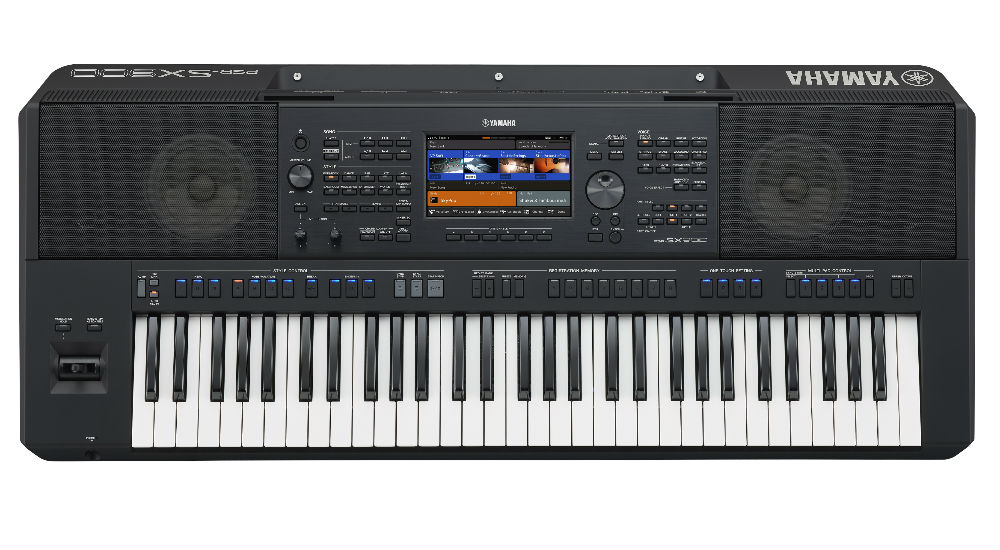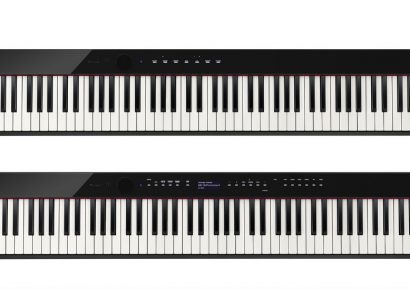Upon playing the PSR-SX900 for the first time, I was immediately taken aback by the authenticity of some of the sounds. The Fender Rhodes sound (labeled as “Suitcase” in the sound bank) really does well to capture the crystal-like tone of the real thing. And if you’re after something slightly grittier, you’ve also got the option of Rhodes with a smattering of distortion, or even some phasing. The Wurlitzer sound (or “Vintage”) is a true gem of the PSR-SX900. If you blindfolded me, placed the SX900 and a Wurlitzer side-by-side and asked me to discern between the two, I’d honestly be pretty stumped. That signature Wurlitzer “bark” is captured beautifully, especially towards the lower end of the register. Safe to say the guys from Supertramp would be happy with this one.
The selection of organ tones is pretty impressive as well, starting with the Hammond. As most organ players would know, there is a tonne of tonal variation that can be realised with the Hammond. To their credit, Yamaha does well to provide us with just a few of these. For instance, the warm, whirly tone used by Booker T. Jones, to the brighter, overdriven tones, commonly used by prog legends such as Keith Emerson and Rick Wakeman back in the day. Even the slightly less popular Vox Continental combo sound – the trademark of Ray Manzarek of The Doors — is bang on the money. The only issue here in the organ department is the rotor pedal setting: instead of a seamless slow-to-fast rotor transition, there is an audible break in the sound which is rather off-putting. The brass sounds — which I believe to be some of the trickiest for keyboard designers to replicate — are delightfully authentic on the PSR-SX900. They cut through the mix perfectly, without sounding brittle or tinny like other keyboard-brass sounds I’ve heard.
The grand and upright piano sounds, on the other hand, are comparatively thin and one dimensional. The tonal roundness that you would expect from an acoustic piano is virtually absent, and when used with a sustain pedal, the sound decays much quicker than it should. Personally, I would preference the other electric keyboard sounds that the PSR-SX900 has to offer above the piano ones. I’m afraid Yamaha have slightly missed the mark here – a rare mishap indeed.
However, they absolutely nailed the newly designed, bi-amped speaker system. For starters, you can crank the volume reasonably loud without any crackling or annoying internal buzzing that you may experience with other keyboards. Also, they do a fantastic job of projecting those boomy bass frequencies, while ensuring that the higher frequencies don’t get lost in the mix. Another interesting thing about the speakers is their positioning. With previous models, the speakers are designed to pump the sound towards the players’ ears, which does make a lot of sense. However, the speakers on the SX900 model are positioned so as to also project the sound towards the audience. I would go so far as to say that, if you were a soloist performing in a small, intimate venue, then the built-in speakers would most likely suffice.
The PSR-SX900 comes with some fairly exciting features. The newly-designed, seven inch touch screen makes it easy to navigate through myriad sounds, rhythms and settings. It’s also very responsive, with a thoughtfully designed layout. One of my favourite things about the PSR-SX900 is the ability to layer your sounds. The format is pretty straightforward: you can choose one sound for the left hand, then up to three in the more expansive right-hand region. For example, I tried programming a bass guitar sound in the LH, then layering some Rhodes with a mellow Hammond setting in the RH. The end result is a well-balanced amalgam of sounds, with both high and low frequencies having plenty to say. Of course, there’s heaps of room to be more adventurous; after all, there are nearly 1400 sounds to choose from. As a typical Nord Stage 3 user myself, I’m rapt to see the layering/split features implemented so well on another, comparatively less expensive keyboard.
Singers also have a few reasons to be happy with this model. The SX900 allows them to run their microphone through the keyboard, add harmonies over the top, and even treat their vocals with some quirky vocoder settings. Another of the Workstation’s new features is called Styles: these are a set of programmed rhythmic backing patterns that you can improvise, record and even gig over. Once again, there is a comprehensive set of rhythms to choose from, derived from a number of different genres — rock, Latin, and EDM just to name a few.
One of the PSR-SX900’s boldest innovations is the Chord Looper. This essentially allows you to loop a chord progression of your choice, and improvise over the top as you wish. You can program up to eight different sets of chord progressions, which is more than ample. Personally, I find this feature a tad superfluous, and don’t see it becoming overly popular, but you never really know what the people are into.
The PSR-SX900, with its 4GB of internal storage, is really an ideal keyboard for today’s generation of solo songwriters and performers. I can see its beautifully modeled electric keyboard and organ sounds being artfully employed in the latest wave of neo-soul, and wouldn’t be surprised if the Workstation became a regular fixture throughout the local live scene.

